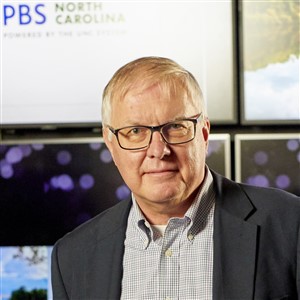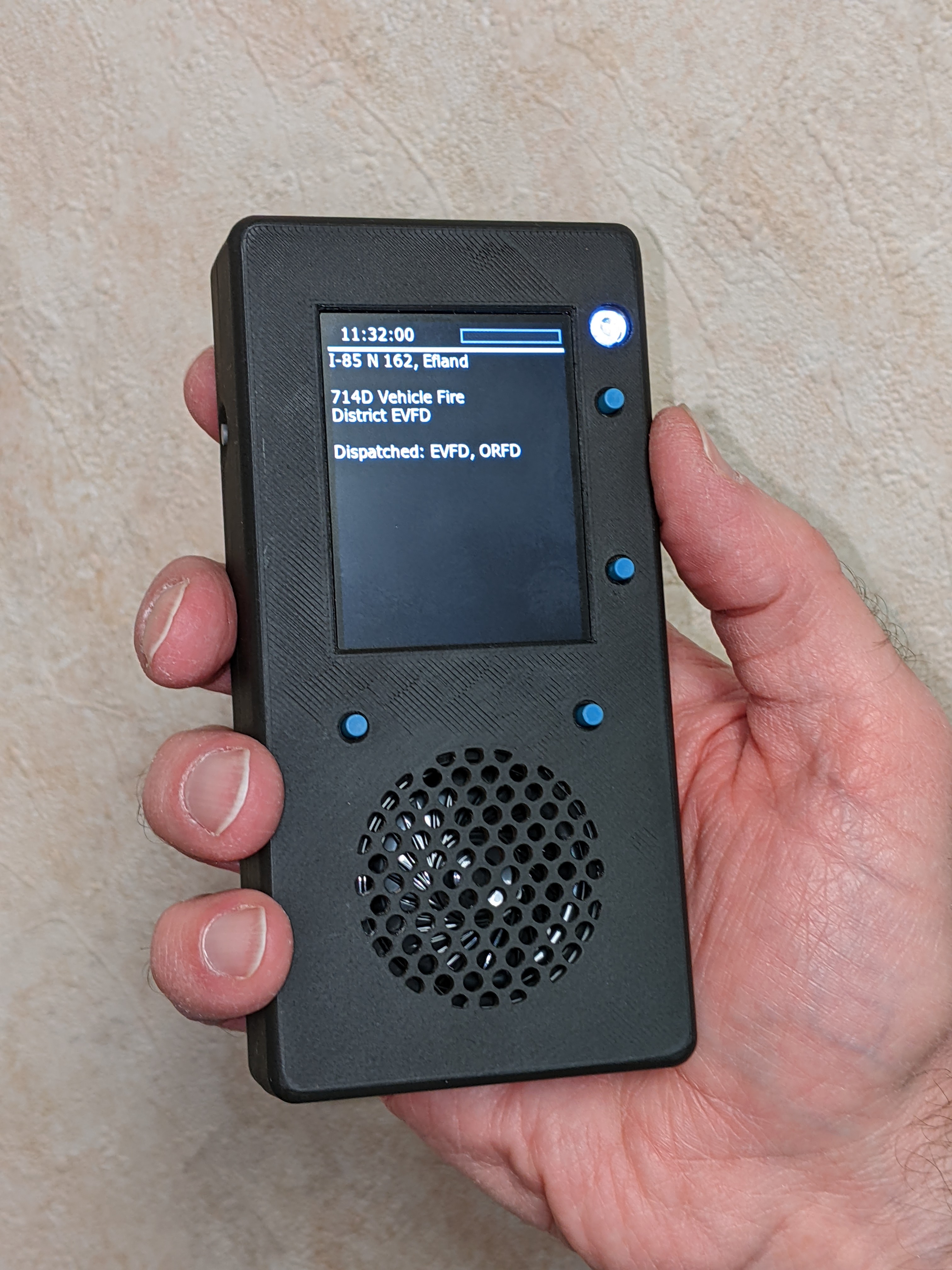
RALEIGH, NC—An update to the analog pager system used to dispatch first responders to emergencies is long overdue, says Fred Engel, CTO of PBS North Carolina.
The existing system, more than a half century old, may have been great in its day, but by today’s standard is unacceptably slow, taking precious minutes to deliver dispatches and details of emergencies that could have been delivered in seconds with a modern digital alternative.

Shortly after he joined PBS NC in 2016, two officials from the North Carolina Department of Information Technology approached Engel with an idea about how to replace the existing system: rely on a robust ATSC 3.0 over-the-air datacast to transmit dispatches to the first responder community as part of the bit payload allocation of public television stations statewide.
Since then, the project has received wide praise and industry recognition. It’s also received a government grant to develop prototype digital pagers with 3.0 receivers. The units, developed by Device Solutions in Morrisville, N.C., are undergoing field testing this month.
In this interview Engel, who will present as a member of the virtual TVTech Summit panel on NextGen TV services March 31, talks about the new 3.0 pager prototype, the field trials and other projects being investigated in PBS NC’s ATSC 3.0 lab.
(An edited transcript.)
TVTech: When do you expect the field trials of the 3.0-based paging system for first responders to begin?
Fred Engel: The initial trials will begin this month. Our business partner Device Solutions has built a handful of the standalone pagers. The other one is an ATSC 3 paging device receiver with a Bluetooth communication device to talk to a cell phone.
The professional video industry's #1 source for news, trends and product and tech information. Sign up below.
TVT: Can you offer a little more detail on the field testing?
FE: When we wrote the narrative for the DHS [Department of Homeland Security] grant we wrote what the goals of the Small Business Innovation Research Grant would be.
The first thing we do is just go out there and see how well they work. Device Solutions works with a nonprofit called the Wireless Research Center of North Carolina [WRC]. WRC is very interesting, they've done a lot of work in IoT devices and cellular devices.
They have two or three RF anechoic chambers—really real quiet RF environments. They have a mannequin that replicates the human body. So, they put that mannequin in the chamber, and then they move these IoT devices around at extremely low levels of RF coming out of the antenna in there. That's how they can model how well this will all work.
One of the people at the WRC, an electrical engineer, has worked for a consumer antenna manufacturer, so we're working with a few of those folks who will devise a measurement plan to go out in the field with this device and compare it to the analog voice pager, which works on a VHF radio.
We're also working with some NC State graduate students studying consumer science. A few are interested in doing this as a graduate student project where they gather and analyze the data, create dashboards and whatnot.
We want to be very, very scientific on how we do this. There are multiple software products out there that look at what the anticipated reception capability will be at any point from the tower site out to various locations. One that I want to get is Progira planning software.
They have developed an analysis that looks at up to two PLPs. We have a very robust PLP for all this emergency data delivery, and then we'll have another PLP for our typical TV programming. We are looking at some of the projections from that at our WUNK transmission site in Greenville [N.C.] The numbers look remarkable.
TVT: What about terrain considerations in North Carolina?
FE: North Carolina is flat on the east side. We're in the Piedmont area which is a little more hilly. Then, of course, in the western part of the state there are mountains. So, it is a good place to start in Greenville to get a good baseline. We'll start out there and try to do the scientific measurements. You go out in radials leaving the transmission site. I’m sure there will be different scenarios for indoor reception.
We’re going to tag along with them [WRC] as they're doing the measurements. We’ll be there to assist, but they are the ones who are really gathering the data for this. We’re just going along to see what happens.
TVT: You’ve recently said your ATSC 3.0 lab at PBS NC is pursuing additional projects. What sorts of things and do they fit in with the 3.0 digital pager project?
FE: One of our other efforts is on the remote learning side using ATSC 3 as a method of delivering educational content to receiving devices that can then connect to students’ computers or other devices.
We want to verify that [signal strength and reception characteristics] alongside WRC, working with them. They're not working on the education project. That's our project that we're working with some other folks. But we can do those analysis at the same time.
So we have a van outfitted for this ready to go. We've got a whole batch of antennas that we're going to be using plus whatever these small devices that the public safety folks will be using.
TVT: Tell me about the Big Stick in Greenville. Is there a vertical transmission component?
FE: Yes. That’s a million watts horizontal and 500 kW vertical (ERP). When the digital transition took place in the late ‘90s, early 2000s—when they created the DTV network here, they made sure that every antenna had that horizontal and vertical component to it.
TVT: I asked about the V-pol because I am guessing that will be the typical orientation of the digital 3.0 pager. Tell me about the receive antenna that is being used.
FE: On receive antennas, sometimes you can get antenna gain from a receiver. If you measure just with a dipole, you'll get this, but if you have a series of elements that provide an additive effect to it, you'll get gain.
These devices, the gain actually has a negative sign in front of it because they just don't work as well as a dipole. They just can't.

Device Solutions is working with the folks from the Wireless Research Center on that design because WRC has a lot of experience working with small form-factor UHF antennas.
This picture of the device is a prototype; the commercial product will be significantly different when it comes out.
TVT: Once the tests are completed and you’ve confirmed performance is superior to an analog pager and the design is finalized, how will this 3.0-based digital pager make it to the first responder market?
FE: We at PBS North Carolina, we didn't know anything about this [the existing analog pager and the time needed to dispatch responders with it] being a concern. But the first responder community did. They came to us with a problem looking for a solution.
One of the good guys who was working here when I got here in 2016 connected me with two guys in particular—Red Grasso and Allan Sadowski from the North Carolina Department of Information Technology. Allan, who is now retired, is an electrical engineer and a prodigious reader and writer.
He looked at ATSC 3 and knew about it and said, “Let’s talk to Fred at PBS and see about this.” I’d love to say this was my idea, but it wasn’t. It was theirs.
So to answer your question, assuming it works, then it's going to be up to the public safety community to evangelize it into their community. One thing I’ve learned in my dealings with the folks in public safety here in North Carolina, and my previous job in Kentucky, is, you only get one chance. It better work. That's why we've been so cautious and deliberate in our efforts on this. It has to work, and I feel confident that it will, but you know, you really have to prove it.
Editor’s note: Fred Engel and his associates have published three ATSC 3.0-related white papers, which are available online. They include: “Public Safety Datacast Paging,” “The Educational Broadband Gap: A Whitepaper on Utilizing ATSC 3.0/NextGen TV to Address Remote Learning Needs” and “ATSC 3.0 and Public Broadcasting: A Whitepaper Supporting Public Broadcasters’ Efforts in ATSC 3.0/NextGen TV.”
To register for the TV Tech Summit, visit tvtechsummit.com/march
Phil Kurz is a contributing editor to TV Tech. He has written about TV and video technology for more than 30 years and served as editor of three leading industry magazines. He earned a Bachelor of Journalism and a Master’s Degree in Journalism from the University of Missouri-Columbia School of Journalism.

